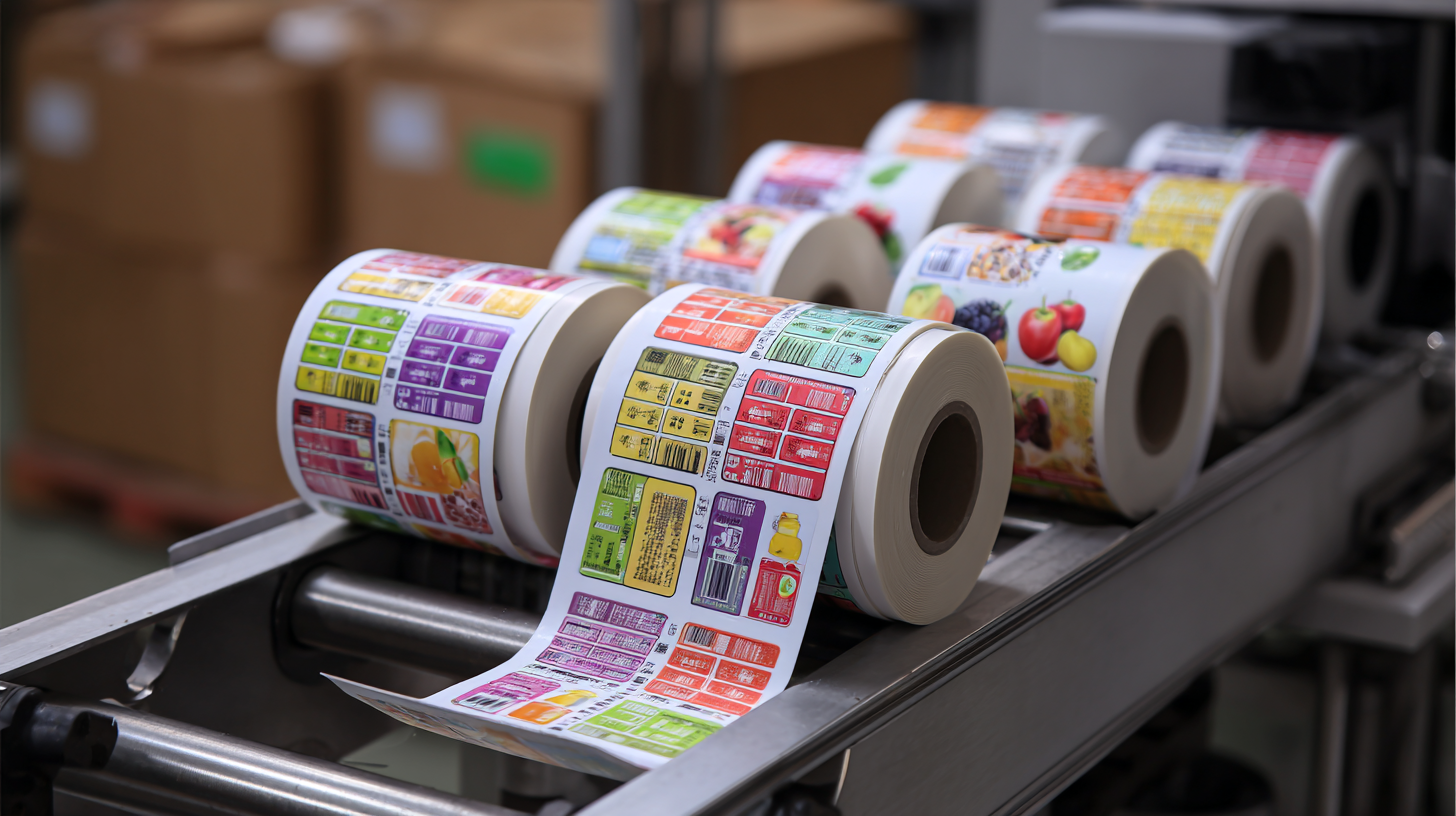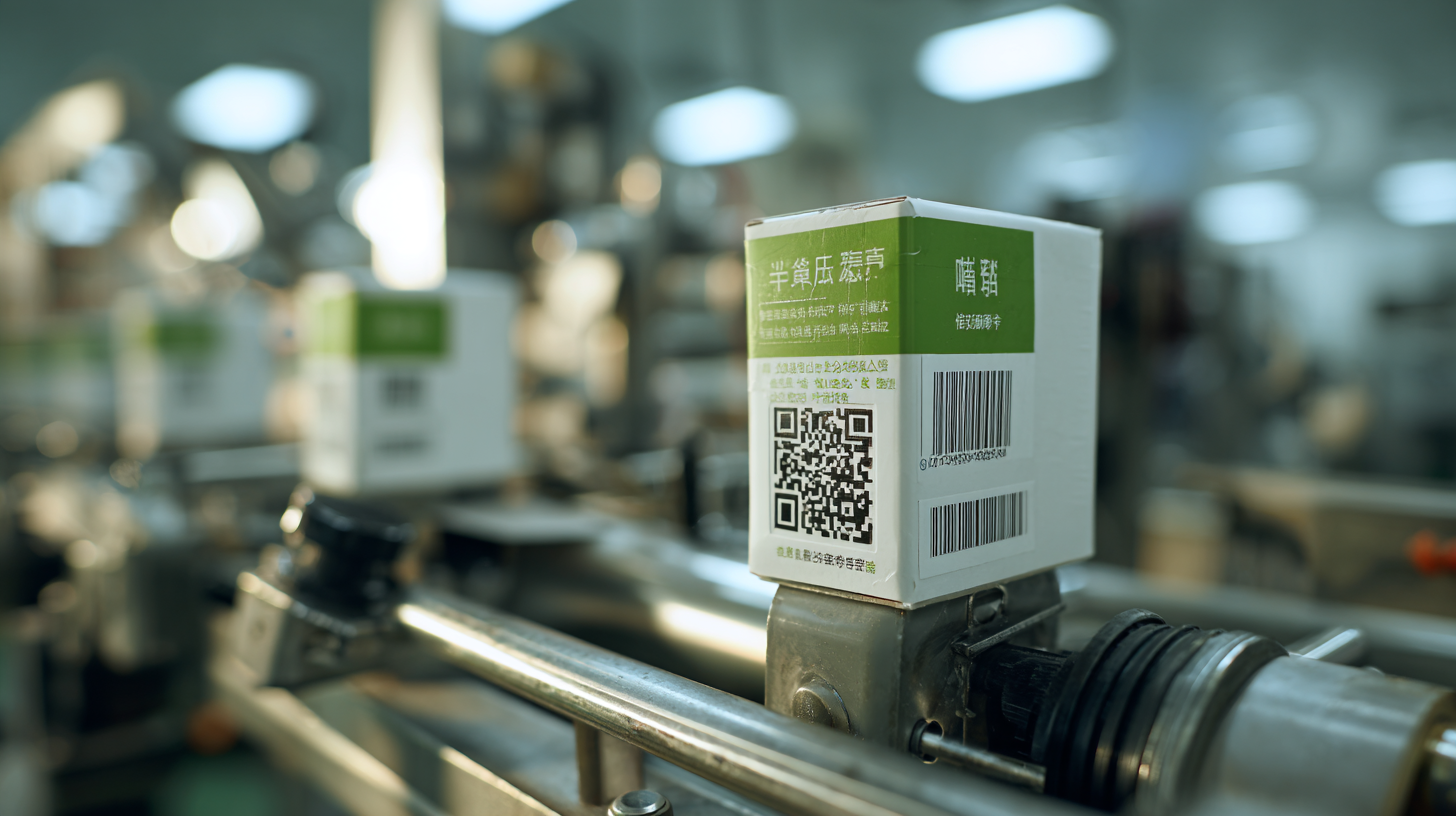5 Essential Features of the Best Food Packaging Label Printers for Global Buyers
In the competitive realm of food packaging, the demand for high-quality packaging label printers has surged dramatically. According to a recent report by Smithers Pira, the global market for food packaging is projected to reach $450 billion by 2024, highlighting a significant need for efficient and reliable Food Packaging Label Printers. As businesses aim to meet regulatory requirements and consumer expectations, the right labeling solutions not only enhance brand visibility but also ensure compliance with food safety standards. Therefore, understanding the essential features of the best Food Packaging Label Printers is crucial for global buyers looking to invest in technology that can streamline operations and elevate product presentation. This blog explores five essential features that define top-tier food packaging label printers, focusing on solutions offered by premier manufacturers in China, known for marrying innovation with quality.

Key Factors to Consider When Selecting Food Packaging Label Printers
When selecting food packaging label printers, several key factors should be considered to ensure that you choose a model that meets both your operational needs and compliance standards. Firstly, the printer's resolution is crucial. High-resolution printers produce sharp images and text, which is essential for conveying nutritional information and branding effectively. Look for printers that offer at least 300 DPI, as this will ensure clarity and professionalism in your labeling.
Another important factor is the printer's compatibility with various label sizes and materials. Food packaging can vary greatly, from adhesive labels for jars to flexible sleeves for pouches. A versatile printer that can handle different types of media will provide more flexibility in your labeling processes. Additionally, consider the speed at which the printer operates. In a fast-paced production environment, a printer that can quickly churn out labels without compromising quality can significantly enhance efficiency and reduce downtime. By focusing on these critical aspects, you can make a more informed decision when investing in food packaging label printers.

Innovative Printing Technologies Revolutionizing Food Labeling
Innovative printing technologies are reshaping the landscape of food labeling, making it more efficient and adaptable to the needs of global buyers. Cutting-edge printers now feature high-speed digital printing, which allows for quick turnaround times and the ability to produce smaller batches without sacrificing quality. This flexibility not only reduces waste but also enables businesses to stay responsive to changing market demands.
When selecting a food packaging label printer, one essential tip is to consider the type of ink used. Eco-friendly, food-safe inks are gaining traction, as they align with growing sustainability trends and regulations in the food industry. Additionally, opt for printers that can handle various label materials, ensuring compatibility with an array of packaging types while maintaining durability under different conditions.
Another important feature to look for is the integration of smart technology. Printers equipped with RFID technology or cloud connectivity streamline the printing process, allowing for real-time inventory management and updates. This innovation not only enhances operational efficiency but also supports compliance with food safety regulations, a critical aspect for global distribution.

Durability and Compliance: Essential Features for Food Safety
When selecting food packaging label printers, durability and compliance emerge as critical features that ensure food safety and regulatory adherence. A robust label printer must withstand various environmental factors, such as humidity, temperature fluctuations, and exposure to chemicals. The labels produced should be resistant to smudging, fading, and peeling, maintaining legibility throughout the product's shelf life. This durability not only enhances the aesthetic appeal of food products but also assures consumers that the information regarding ingredients, allergens, and expiration dates remains clear and accurate.
Compliance with food safety regulations is another essential criterion. Printers should support label materials that are food-safe and meet industry standards established by organizations such as the FDA and USDA. The ability to produce labels that feature barcodes and QR codes can aid traceability and quick access to product information, which is vital in times of recalls or consumer inquiries. A printer that integrates compliance checks and provides easy updates for regulatory changes can significantly benefit global buyers in maintaining their commitment to food safety while navigating diverse market requirements.
Overview of Essential Features in Food Packaging Label Printers
This bar chart illustrates the importance of various features in food packaging label printers for global buyers, focusing on factors such as durability, compliance, speed, print quality, and cost-effectiveness.
User-Friendly Interfaces and Software Solutions for Label Design
In the fast-paced world of food packaging, having a user-friendly interface and software solutions for label design is crucial for global buyers. Modern label printers come equipped with intuitive design software that simplifies the process of creating custom labels. These solutions often feature drag-and-drop functionality, pre-designed templates, and easy-to-use color palettes, making them accessible even for those without a design background. This ease of use allows businesses to quickly adapt their packaging to meet market demands and regulations, ensuring compliance while maintaining a high-quality presentation.
Moreover, many advanced label printers integrate seamlessly with existing software systems, such as inventory management and supply chain solutions. This integration allows users to streamline their workflow, reducing the time spent on label creation and improving overall efficiency. By enabling quick updates and edits to labels, these printers help businesses stay agile in a dynamic market. As global buyers seek to enhance their brand appeal, investing in food packaging label printers with user-friendly software can significantly enhance their operational capabilities and customer engagement.
Cost-Effectiveness and Maintenance in Food Packaging Label Printing
When selecting food packaging label printers, cost-effectiveness and maintenance are paramount considerations for global buyers. According to a recent report by Smithers Pira, the global market for food packaging labels is expected to reach $56.7 billion by 2024, highlighting the increasing demand for efficient label production. This surge emphasizes the need for printers that not only deliver high-quality labels but also come with low operational costs. Printers that utilize thermal transfer technology, for instance, can significantly reduce ink and material expenses, allowing companies to allocate resources more judiciously.
Moreover, maintenance plays a crucial role in minimizing downtime and maximizing productivity. A study by the National Association of Manufacturers found that equipment failure can cost manufacturers as much as $1,500 per hour in lost productivity. Printers equipped with self-cleaning mechanisms and user-friendly interfaces can mitigate these issues, ensuring that label production runs smoothly. Additionally, investing in printers with longer lifespans and easily replaceable components can lead to lower maintenance costs over time, making them a wise choice for businesses aiming to enhance their operational efficiency while keeping expenses in check.
